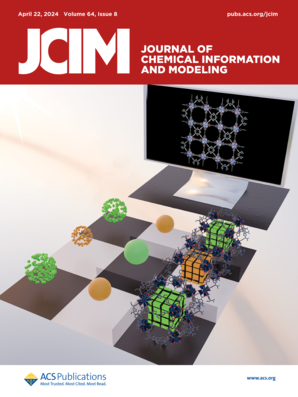Machine Learning-Driven Prediction of Electrochemical Promotion in the Reverse Water Gas Shift Reaction.
IF 5.6
2区 化学
Q1 CHEMISTRY, MEDICINAL
引用次数: 0
Abstract
Electrochemical promotion of catalysis (EPOC) provides an effective and versatile strategy to enhance catalytic activity, selectivity, and stability in the reverse water-gas shift (RWGS) reaction, facilitating efficient CO2 hydrogenation to syngas under milder conditions. However, predicting EPOC results using novel catalytic materials under diverse conditions remains challenging. This study introduces a machine learning framework to predict electrochemical promotion behavior and the rate enhancement ratios (ρ), i.e., ratio between promoted and unpromoted reaction rate, based on the selected catalyst, reaction, and electrochemical condition descriptors. Several classification and regression models were trained and tested using a data set compiled from previous studies. The best-performing random forest (RF) and extreme gradient boosting (XGB) models were validated with new experimental data collected from systems employing lithium lanthanum titanate (LLTO) solid electrolyte and Pt-ZnO catalysts, achieving an R2 of 0.97 and a mean squared error (MSE) of 0.01. This data-driven approach is interpretable, generalizable to other catalytic systems, and provides a powerful tool for advancing the development of catalytic materials for EPOC in RWGS reactions.机器学习驱动的水气倒转反应电化学促进预测。
电化学促进催化(EPOC)提供了一种有效和通用的策略来提高反水气转换(RWGS)反应的活性、选择性和稳定性,促进在较温和的条件下有效地将CO2加氢成合成气。然而,在不同条件下使用新型催化材料预测EPOC结果仍然具有挑战性。本研究引入了一个机器学习框架来预测电化学促进行为和速率增强比(ρ),即基于所选择的催化剂、反应和电化学条件描述符,促进和未促进反应速率之间的比率。使用从以前的研究中编译的数据集训练和测试了几个分类和回归模型。采用钛酸镧锂(LLTO)固体电解质和Pt-ZnO催化剂对随机森林(RF)和极端梯度增强(XGB)模型进行了验证,其R2为0.97,均方误差(MSE)为0.01。这种数据驱动的方法是可解释的,可推广到其他催化系统,并为推进RWGS反应中EPOC催化材料的开发提供了有力的工具。
本文章由计算机程序翻译,如有差异,请以英文原文为准。
求助全文
约1分钟内获得全文
求助全文
来源期刊
CiteScore
9.80
自引率
10.70%
发文量
529
审稿时长
1.4 months
期刊介绍:
The Journal of Chemical Information and Modeling publishes papers reporting new methodology and/or important applications in the fields of chemical informatics and molecular modeling. Specific topics include the representation and computer-based searching of chemical databases, molecular modeling, computer-aided molecular design of new materials, catalysts, or ligands, development of new computational methods or efficient algorithms for chemical software, and biopharmaceutical chemistry including analyses of biological activity and other issues related to drug discovery.
Astute chemists, computer scientists, and information specialists look to this monthly’s insightful research studies, programming innovations, and software reviews to keep current with advances in this integral, multidisciplinary field.
As a subscriber you’ll stay abreast of database search systems, use of graph theory in chemical problems, substructure search systems, pattern recognition and clustering, analysis of chemical and physical data, molecular modeling, graphics and natural language interfaces, bibliometric and citation analysis, and synthesis design and reactions databases.

 求助内容:
求助内容: 应助结果提醒方式:
应助结果提醒方式:


